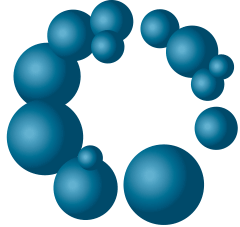Open post-doctoral position – NanoGlio Project
Category: Post-doc
Duration: 1 year
Team: Polymer Self-assembly and Life Sciences (LCPO, Team 3)
Funding: Région Nouvelle-Aquitaine
Laboratory: Laboratoire de Chimie des Polymères Organiques (UMR 5629) – ENSCBP 16 Avenue Pey-Berland, 33607 Pessac Cedex, FRANCE (https://www.lcpo.fr/)
Applicant profile
You hold a PhD in (bio)organic, polymer or physical-chemistry.
You are interested in contributing to a multidisciplinary project dealing with the development of polypeptide- based nanomedicines for photo- or radiodynamic therapy (PDT/RDT) against glioblastoma via a one-year post-doc fellowship.
You have a strong interest in a research topic at the interface of chemistry, physical chemistry, and biology, in direct collaboration with clinicians. Thus, you are willing to interact with collaborators of various specialties (chemists, biochemists, physical-chemists, biologists, oncologists, radiologists).
You enjoy working in a team to contribute to a scientific project with scientific rigor.
Advanced knowledge in the synthesis or bioconjugation of molecules for supramolecular interactions will be a must.
Application
1. Provide a CV and a motivation letter
2. Send the documents to Sébastien Lecommandoux (lecommandoux@enscbp.fr) and Elisabeth Garanger (garanger@enscbp.fr)
After a first selection round, the best candidates will be invited for a job interview. The postdoctoral researcher is expected to start in the first trimester of 2022.
Project summary
Glioblastoma IDH1 WT (GBM), a grade IV malignant glioma, is one of the most lethal types of human cancer, because of its aggressive characteristics by being highly invasive. The prognosis of patients is poor with a survival rate lower than 7.2% after 5 years, despite a standard heavy treatment composed of radio- chemotherapy plus resection. The main treatment consists of a Gliadel® wafer, an implantable medicine applied during surgery, associated with radiotherapy. Nevertheless, this system is less and less used in Europe and is not ideal for GBM therapy. In fact, among its main weaknesses, the stiffness of this implant must be reduced and its specificity improved, in order to limit side effects and improve its efficiency. So, the efficacy of actual treatments remains very insufficient.
Recent advances in nanomedicine offer various possibilities in the development of a wide variety of cancer therapies. In this context, we propose to develop nanodrugs based on the design of biomimetic and biofunctional polymers, capable of delivering a therapeutic dose in a controlled manner. Our nanomedicine will be used in Photo- or Radio-dynamic therapy protocols (PDT/RDT), i.e. activated by laser or X-rays in order to produce ROS and induce cancer cell apoptosis. Formulations for either intravenous (IV) or local administration will be designed, using protein-drug conjugates. Specifically, elastin-like polypeptides (ELPs), developed and patented by the host laboratory, will be used as polymer backbone regarding their advantageous properties: (i) biocompatibility, stability, biodegradability and non-immunogenicity, (ii) quantitative grafting capacity of therapeutic actives and/or photo-sensitizing agents, (iii) ligand functionalization to improve the specificity and/or the blood-brain barrier (BBB) passage via specific receptors, (iv) thermosensitivity control for IV route of administration or local post-surgical deposition.
The main goal of this project will be to carry out the synthesis and characterization of ELP-based conjugates. One objective is to optimize supramolecular interactions to obtain a hydrogel, for the local deposit. It is possible to imagine combining several approaches and biomolecules, to achieve this goal.
In collaboration with our clinical partners who have validated these approaches, the potential of the developed nanomedicines will be evaluated on 2D/3D tumor models from patients’cell cultures.
Laboratoire de Chimie des Polymères Organiques, UMR 5629 ENSCBP, Bât. A, 16 av. Pey-Berland F-33607 Pessac Cedex


